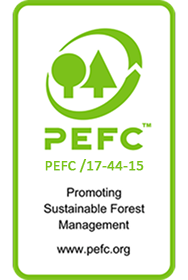Ash and Pine wood are widely used in furniture, flooring, cabinetry, and even large-scale timber construction — but they differ significantly in appearance, durability, hardness, and price.
In this detailed comparison, we’ll explore Ash vs Pine wood from every angle — helping you choose the best wood for your purpose, budget, and environment.
Overview of Ash Wood
It is a hardwood derived mainly from the Fraxinus genus. It’s popular for its strength, flexibility, and shock resistance, making it a top choice for high-end furniture, flooring, and sports equipment.
Key Characteristics of Ash Wood
-
Type: Hardwood
-
Color: Light cream to beige with straight, uniform grain
-
Texture: Smooth with open pores
-
Durability: Highly durable and strong
-
Common Uses: Furniture, doors, flooring, veneers, tool handles, staircases
Pros of Ash Wood
✅ High strength-to-weight ratio
✅ Attractive grain patterns similar to oak
✅ Good workability for carving and machining
✅ Excellent bending properties
Cons of Ash Wood
❌ Not suitable for outdoor use without treatment
❌ Can darken over time when exposed to sunlight
❌ Slightly more expensive than softwoods
Overview of Pine
It is a softwood sourced from the Pinus genus. It’s abundant, lightweight, and more affordable — which makes it a favorite for large-scale construction, furniture making, and interior décor.
Key Characteristics of Pine
-
Type: Softwood
-
Color: Pale yellow to light brown with visible knots
-
Texture: Medium to coarse grain
-
Durability: Moderately durable; can last long when treated
-
Common Uses: Furniture, flooring, paneling, doors, plywood, joinery
Pros of Pine Wood
✅ Cost-effective and easy to find
✅ Lightweight and easy to work with
✅ Accepts paint, stain, and polish very well
✅ Eco-friendly and fast-growing
Cons of Pine Wood
❌ Softer and more prone to dents and scratches
❌ Susceptible to decay and insects if untreated
❌ Visible knots can affect appearance
Ash vs Pine Wood: Detailed Comparison
| Property | Ash | Pine |
|---|---|---|
| Wood Type | Hardwood | Softwood |
| Density | 670–700 kg/m³ | 420–500 kg/m³ |
| Color & Appearance | Light beige, straight grain | Pale yellow with knots |
| Hardness (Janka) | ~1320 lbf | ~380 lbf |
| Durability | High | Moderate |
| Workability | Excellent for machining and bending | Easy to cut, drill, and finish |
| Resistance to Decay | Moderate (requires finish) | Low (needs treatment) |
| Common Uses | Premium furniture, flooring, handles | Budget furniture, interiors, construction |
| Price | Higher | Affordable |
Appearance and Grain Pattern
Ash has a smooth, straight grain that gives it a refined, elegant look — often compared to oak. Its subtle patterns make it ideal for luxury furniture and decorative interiors.
Pine, on the other hand, features visible knots and a distinct rustic charm, perfect for country-style or farmhouse décor. Its natural patterns make it a favorite for interior walls, ceilings, and cottage-style furniture.
Strength and Durability
Ash wood is significantly stronger and harder than pine. It can withstand wear and tear, making it suitable for floors, staircases, and heavy-duty furniture.
Pine wood, being softer, can get scratched or dented easily, but it’s still reliable for light furniture, shelving, and paneling. Treated pine can also perform well in construction and outdoor projects.
Workability and Finishing
Both are known for their excellent workability.
-
Ash wood machines smoothly, holds screws and nails firmly, and can be bent without cracking — ideal for curved furniture or crafted pieces.
-
Pine wood is lighter and easier to cut, making it perfect for DIY projects, interior fittings, and custom joinery.
Both woods take stains and finishes beautifully — but Ash tends to show off its natural grain better, while Pine often benefits from paints or dark stains.
Sustainability and Availability
At AtoZ Wood Company, both Ash and Pine are sourced from responsibly managed forests following international sustainability standards.
-
Ash wood typically comes from mature forests with selective harvesting methods.
-
Pine wood grows faster and regenerates quickly, making it one of the most eco-friendly timber options available.
Both types can be supplied in logs, sawn timber, or slabs, ready for export and bulk orders.
Applications: Where to Use Each
Use Ash Wood for:
-
Premium indoor furniture
-
Flooring and staircases
-
Sports goods (e.g., baseball bats)
-
Tool handles and decorative veneers
Use Pine Wood for:
-
Budget-friendly furniture
-
Interior wall paneling
-
Doors, frames, and moldings
-
Outdoor furniture (when pressure-treated)
Cost and Value
When comparing Ash vs Pine wood price, Pine is clearly the more affordable choice. It’s widely available and easier to transport, making it ideal for large projects on a budget.
Ash, however, justifies its price with superior strength, texture, and longevity, offering long-term value for high-end builds and furniture pieces.
Which Wood Should You Choose?
-
Choose Ash Wood if you want:
→ Strength, durability, and premium aesthetics.
→ Long-lasting furniture or flooring.
→ A hardwood that adds value to your interiors. -
Choose Pine Wood if you prefer:
→ Cost-effective timber with versatility.
→ A lighter, rustic appearance.
→ Eco-friendly, fast-growing wood for large-scale use.
Conclusion
Both Ash and Pine wood bring unique benefits to the table. While Ash offers hardwood luxury and resilience, Pine delivers affordability and warmth.
At AtoZ Wood Company, we supply both Ash and Pine wood in bulk and retail quantities, available as logs, sawn timber, and slabs — all sustainably harvested and ready for export to over 30 countries.
Whether you’re building furniture, flooring, or a large-scale timber project, our experts can help you choose the right wood type to match your design, durability, and budget needs.
 +237 681 25 6934
+237 681 25 6934




